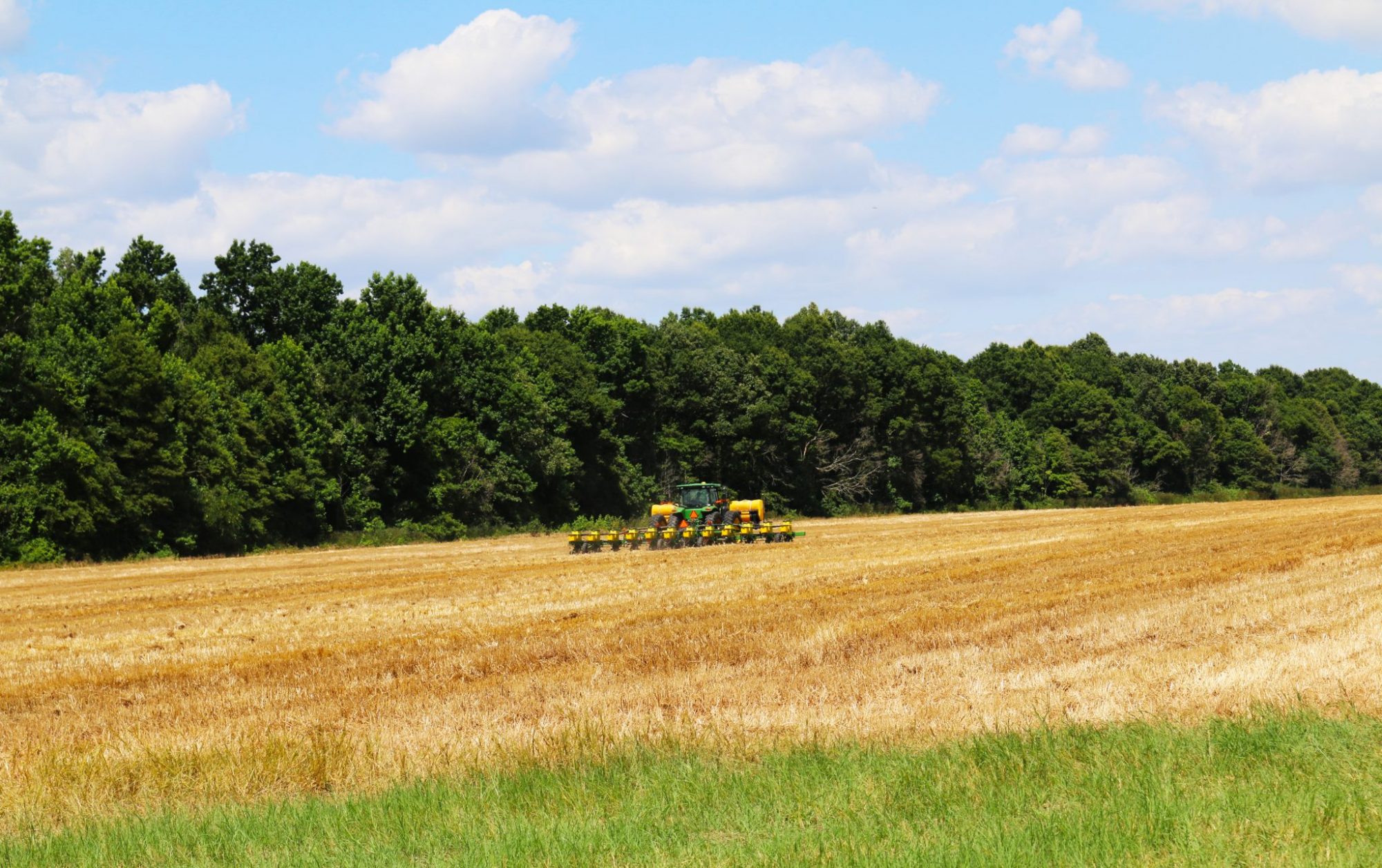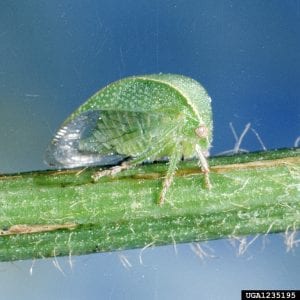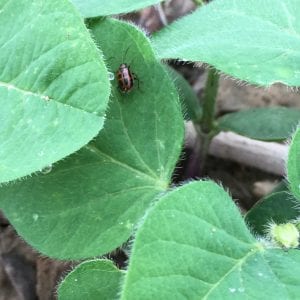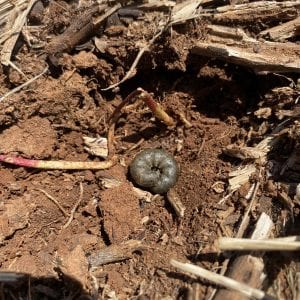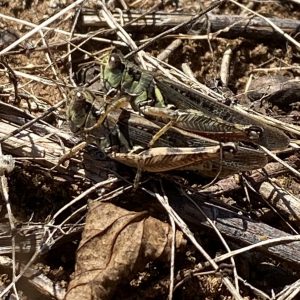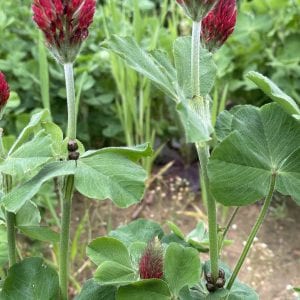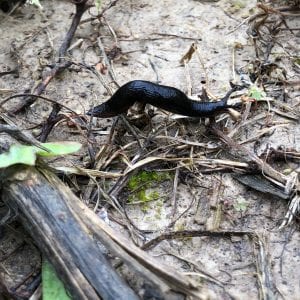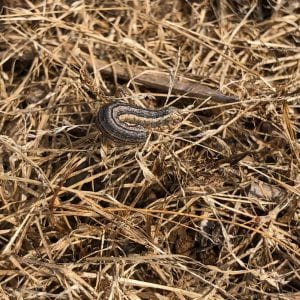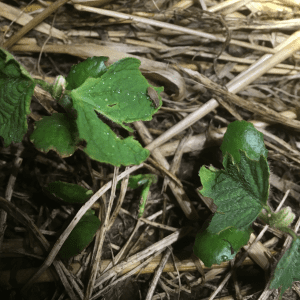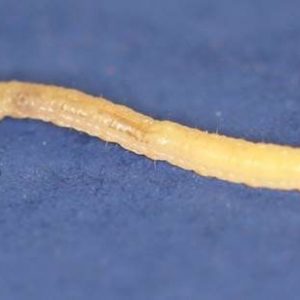Crop Production

Although there isn’t a consistent insect pest of seedling soybeans (like thrips in cotton), Alabama producers do have some sporadic pests that may show up—particularly in certain situations.
Insecticide Seed Treatments
One of the hot button topics across the soybean IPM community is insecticide seed treatments (IST). Some regions say ISTs are needed, others say they are not. Producers won’t use (and probably don’t need) ISTs on every acre of soybeans in Alabama. However, one thing producers in Alabama do know is that each year brings its own challenges and surprises. There are a couple of factors that determine whether or not producers will need to treat soybeans with an IST.
Tillage practices. Fields that are in reduced or no-till production are generally at a higher risk of early season insect pressure. The timing of winter weed burndown plays an important role as well. Typically, entomologists recommend killing weeds three to four weeks prior to planting.
Cover crops. The type and termination of cover can have major impacts on seedling pests of soybeans. Planting a legume cover crop (e.g. Austrian winter pea, clover, vetch) in front of a legume crop (i.e. soybean) can cause major problems. As said above, terminating three to four weeks prior to planting can help to eliminate the “green bridge” and reduce pressures early on.
Soybean Pests
The following are some pests to consider and what to do about them:
- Three-cornered alfalfa hoppers attack the mainstem of soybean seedlings. Most times, girdled plants do not suffer significant yield loss, however sometimes plants will lodge. It is important to remember that plants that lodge later in the season were damaged as seedlings (<10 inches tall) and revenge sprays do no good. Insecticide seed treatments should provide good control of TCAH for up to four weeks.
- Cutworms are typically worse in cool, wet years. If winter vegetation is not terminated more than three weeks prior to planting, tank-mixing a pyrethroid with a herbicide application approximately seven days before (or after) planting may be warranted if cutworms are present.
- Bean leaf beetles are sporadic but may cause significant early season defoliation if left untreated. Typically, ISTs provide adequate control of BLB. Prior to bloom, foliar sprays may be justified if defoliation reaches 35 percent.
- Adult threecornered alfalfa hopper. Clemson University – USDA Cooperative Extension Slide Series, Bugwood.org
- Bean leaf beetle on soybean plant.
- Cutworm next to damaged cotton seedling.
- Grasshoppers are primarily a threat in conservation tillage systems. In fields with previous issues with grasshoppers, an application of Dimilin in combination with burndown herbicides can be used to reduce the risk of damage. Adult grasshoppers are more difficult to kill, so try to kill immatures when possible.
- Kudzu bugs may be found on seedling soybean fields, particularly on field edges near kudzu or in fields planted after a leguminous cover crop. There is little data on the effects of ISTs and kudzu bugs, but from what researchers can gather they have little-to-no effect. Currently the recommended threshold for kudzu bug on vegetative soybean is an average of five per plant across the entire field (i.e. don’t just scout field borders). Keep in mind that adults are fairly mobile so there is potential for reinfestation after insecticide applications. This is why entomologists only recommend treating beans later in the year if immatures are present.
- Slugs are becoming more and more of an issue across the south. They are typically worse in cool, wet years and in fields following a grass crop, such as corn. Outside of tillage, control options are limited. Some baits are available (Deadline M-PS, Bug-N-Sluggo) however these products are rather pricey. Currently, the best option for slug management is to not plant into environments that are conducive for slugs (high residue, cool, wet). If this cannot be avoided, set row cleaners aggressively to push back plant residue from the emerging seedlings.
- Armyworms may be a problem in fields following wheat, rye or other grass cover crops. These armyworms (typically true armyworms) may feed on foliage or clip small seedlings similar to cutworms. If larvae are present, a mid-rate of a pyrethroid at burndown or around planting (approximately 7 days before or after) typically provides good control.
- Adult grasshoppers in a field at planting.
- Kudzu bugs on crimson clover cover crop.
- Slug in a field prior to planting.
- True armyworm on burndowned plant material.
Odd Critters
Critters to be looking for following leguminous cover crops (clovers, vetch, Austrian winter pea, etc.) include:
- Peal leaf weevils adult weevils leave semi-circle holes on the edges of soybean leaves and can cause significant stand loss if left untreated. Adult pea weevils are attracted to the cover crop, then will move to soybean once they come up. Terminate cover crops at least three weeks prior to planting. Insecticide seed treatments provide significant protection from pea leaf weevils.
- Southern corn rootworm (spotted cucumber beetle) are also attracted to legume cover crops. The larvae feed on roots and can devastate plant stands if left untreated. Insecticide seed treatments provide control of southern corn rootworms.
- Pea leaf weevil on soybean seedling showing characteristic feeding injury.
- Southern corn root worm larva. Photo by University of Georgia.
Takeaway Points
- Burndown timing. Terminate cover crops or winter weeds three to four weeks prior to planting.
- Seed treatments. Use insecticide seed treatments when planting after cover crops.
- Cover crop species. Know your cover. If planting soybeans behind a legume cover crop be prepared for some odd critters to be in the mix.
- Pollinator protection. If possible, avoid spraying pyrethroids on cover crops when they are attractive to pollinators. As long as insecticides are sprayed approximately seven days before or after planting, most insects will be effectively controlled.
Trade names are used only to give specific information. The Alabama Cooperative Extension System does not endorse or guarantee any product and does not recommend one product instead of another that might be similar.

